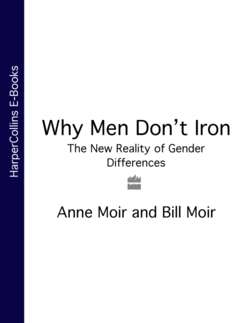Читать книгу Why Men Don’t Iron: The New Reality of Gender Differences - Anne Moir - Страница 20
IS ‘HEALTHY’ FOOD HIGHER IN ALL FATS?
ОглавлениеFat, we are told, is killer food, but we need fat’s essential nutrients, which include fatty-acids and fat-soluble vitamins. Fat is also a rich source of energy, and it helps make many foods palatable. The average person can safely consume about three ounces of fat every day. Nearly everyone carries an adequate reserve (the obese have an over-adequate reserve), so we can live without fat in our diet for a while, but once the reserve is gone we must supply the body from our diet. We all need fat. Pity that it’s a killer. Or is it?
The major cause of heart disease is impaired blood supply. The coronary arteries which supply blood to the heart are narrowed or blocked by plaques (cholesterol-rich deposits on the artery walls) that first compress, then cut, the blood flow. These plaques were investigated by researchers at the Wynn Institute for Metabolic Research in London. Their work studied the fats in the bodies of people who had died of heart attacks, comparing the fat in the blood and adipose tissue (which reflected the dead person’s dietary intake) with the fat in the fatal plaque deposits. The British medical journal The Lancet carried their conclusions: it was not the saturated but the polyunsaturated fats which were implicated in the plaque formation. ‘No associations were found with saturated fatty acids. These findings imply a direct influence of dietary polyunsaturated fatty acids on aortic plaque formation and suggest that current trends favouring increased intake of polyunsaturated fatty acids should be reconsidered.’22
A definition is needed here. Saturated fats come from animal foodstuffs: from meat, butter and other dairy products. Unsaturated fats come from vegetable sources like olives and, just as with cholesterol, popular wisdom divides the fats into good and bad. Saturated fats (from animals) are considered bad, unsaturated (olive oil and others) are good. The Wynn results seem to contradict that categorization; it was the unsaturated fats which contributed to the plaque, not the saturated.
A similar finding about strokes, published in the Journal of the American Medical Association, resulted from a study carried out by a team from Harvard Medical School which examined the link between diet and heart disease in a group of 832 middle-aged men from Framingham, Massachusetts. The researchers followed these men for twenty years and concluded (though they warned that their conclusions require confirmation from other studies) ‘that restriction of fat intake among residents of Western societies, as recommended by the US National Cholesterol Program and others, does not decrease and could increase overall risk of ischaemic stroke’.23 Ischaemic stroke, by far the commonest sort, is caused by a blockage of the blood supply to the brain by a fatty restriction in the arteries of the head or neck. The researchers also noted that a reduction in stroke risk is linked both to total fat intake and to the increased intake of saturated fats.
The Framingham study, like the Wynn results, suggest that our assumptions about fat, and about saturated versus unsaturated fats, need re-examining, but again, let us err on the side of caution and ask whether those who wish to avoid a high-fat diet would be sensible to keep red meat out of their diet? After all the standard nutritional texts commonly claim that a piece of raw red meat is one-quarter fat.24 Meat is also said to provide a quarter of all the saturated fat people eat.25 One authority even estimates red meat to be 40% fat.26 These are scary statistics. They are also plain wrong.
Today’s meat tends to be lean and so it makes sense to calculate the fats in beef from the figures given for the leaner cuts. Most of the best cuts of beef are one part in eight of fat (12.5%), less than half of which is saturated – yet still nutritionists exaggerate both the amount of fat in meat and its dangers. Look at the rankings of seven items drawn from a table in The British Medical Association Complete Family Health Encyclopedia:27
| Food | Total Fat content |
| (grams of fat per 100 grams, or 3.5 ounces, of food) | |
| Sausage, pork, cooked | 42 |
| Beef, lean with fat, roast | 40 |
| Low-fat spread | 39 |
| Cream, whipping | 38 |
| Cheese, cheddar | 32 |
| Chocolate, milk | 30 |
| Egg yolk | 30 |
We checked these figures against the individual rankings in the authoritative English nutritional text published by the Royal Society of Chemistry.28
